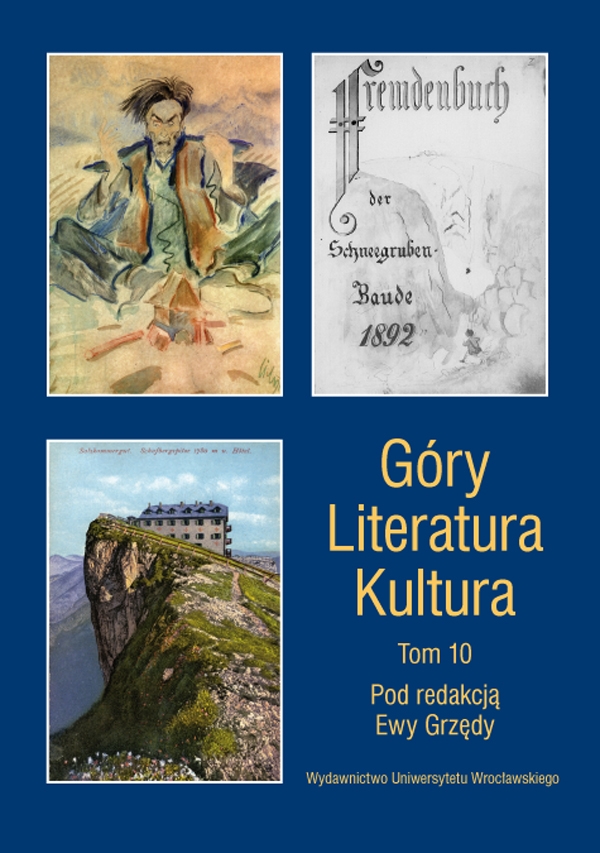

Rozprawy, studia, szkice

Mountaineering, tourism and literature at the turn of the 20th century — links and relations.
A preliminary outline
The second half of the 19th and the early 20th century were marked by extremely significant changes in mountaineering, tourism and literature, changes which can be described metaphorically as the vanguard of 20th-century modernity. Of great importance to the development of both mountaineering and mountain tourism was the creation of associations bringing together tourists and mountaineers, mountain lovers. The associations focused mainly on promoting mountain tourism, making the mountains more accessible building paths, trails, hostels and trying to protect the mountains against the effects of human impact and other civilisational processes — economic, social and technological. The increasingly evident division into mountaineering exploring the mountains by climbing them and tourism, and the spread of this tourism in all mountain ranges in Europe made mountaineering aspecialised form of communing with the mountains, requiring special qualifications and equipment. At the same mountain tourism became amulti-layered phenomenon, as it encompassed, in addition to the “classic” tourism “with backpacks”, resort tourism involving walks, atype of tourism playing an important role in socialising and styles of behaviour, completely different from the models characteristic of tourism in the first half of the 19th century. This led to the emergence of characteristic styles of this tourism, which was becoming an important element of bourgeois popular culture, aprocess that immediately resonated in literature. In the second half of the 19th and the first decade of the 20th century the substantial growth in the number of tourists arriving in mountain villages led to their rapid civilisational and economic development. However, the concept of building mountain railways that were to bring people closer to the most precious asset of the mountains — their intact primeval nature — was asimple extension of the sedentary lifestyle. The development of mountaineering consisted in traversing increasingly difficult routes. This involved not just the ordinary climbing of peaks, but traversing mountain walls. In 1880 and 1881, Albert Frederick Mummery, climbing Grands Charmoz 3,455 m and Grépon 3,482 m, became the first man to traverse extremely difficult routes Grade 5 in the Welzenbach scale. In 1884 Walter Parry Haskett Smith decided to traverse agrade 3 difficult route on his own and two years later he climbed the twenty-metre Lapes Needle in the Lake District, England, which gave rise to competitive climbing, adiscipline distinct from mountaineering. Mountaineers also produced literary works Eugčne Rambert. The so-called “Alpine literature” “la littérature alpestre” encompassed, as its unique variety, par excellence Alpine literature providing an image of the mountains from the point of view of mountaineering and way of approaching mountaineering. Its leading exponents were Edward Whymper and Leslie Stephen; Albert Frederic Mummery 1855–1895 won considerable renown as the author of My climbs in the Alps and Caucasus 1895 as did Henry Russel-Killough 1834–1909 regarded as excellent writer and aman who made a great contribution to the exploration of the Pyrenees Souvenirs d’un Montagnard, 1908. On the other hand, the ideological motivation of Polish mountaineering echoed with the philosophy of Friedrich Nietzsche, Arthur Schopenhauer and Henri Bergson, introducing the subject of mountain climbing into highbrow literature.